‘Keeping Time’ and the fall residency session 2019
Mahler & LeWitt Studios
August 19 – September 29
Cappella del Barolo, Piedmont, Italy
September 20 – October 13
A Ceretto and Mahler & LeWitt Studios project curated by Guy Robertson and Tony Tremlett
The fall residency session was guest curated by former resident Tony Tremlett. It provided a platform for his ongoing research with art practices that employ sound and performance. He brought together six artists from Algeria, Germany, England, Ireland, Sudan and the US. The artists were Babatunde Doherty, Hiba Ismail, Adam Gibbons, Lina Hermsdorf, Lydia Ourahmane and Keef Winter.
The artists we are working with confront inconsistencies in the way the individual is made to engage with the structures of global society. Using sonic and sculptural registers, which waver between the material and the ephemeral, they create haunting allegories, often through live readings of their environment, sketching-out the concerns of diaspora identities, feminist history, and questions of personal identity as experienced through material culture and its underlying semantics.
–Tony Tremlett
In the text which follows, Tremlett outlines some key moments in the residency:
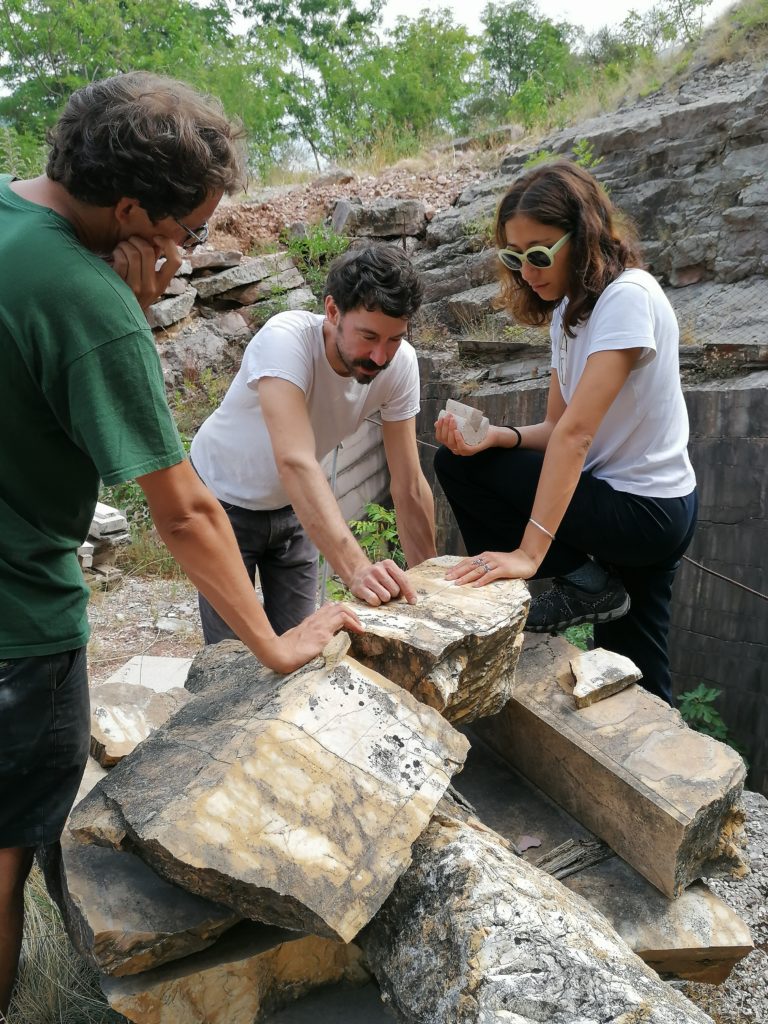
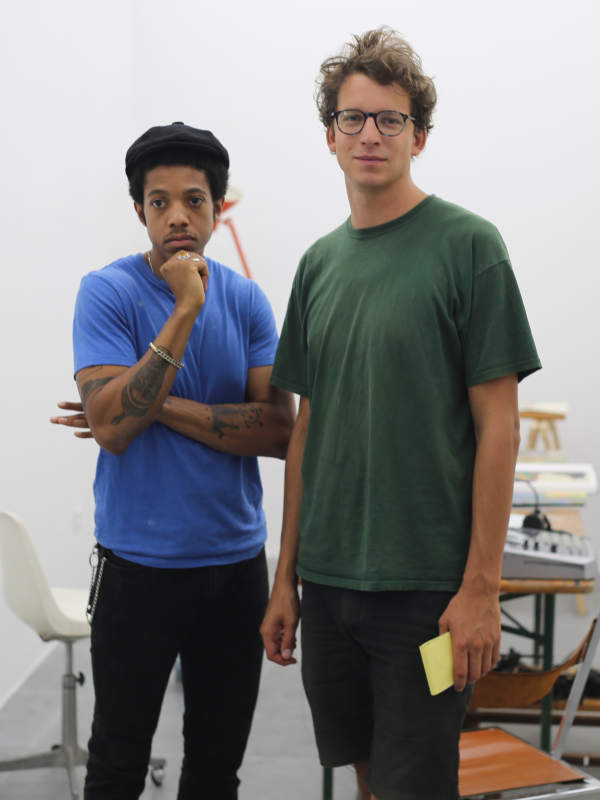
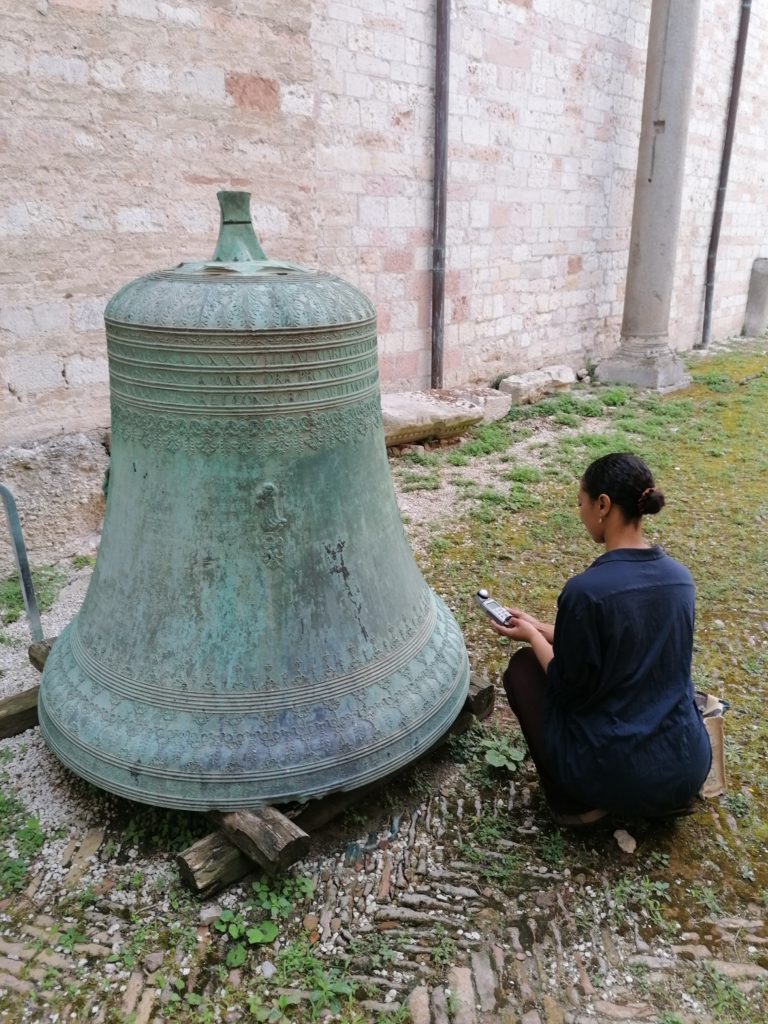
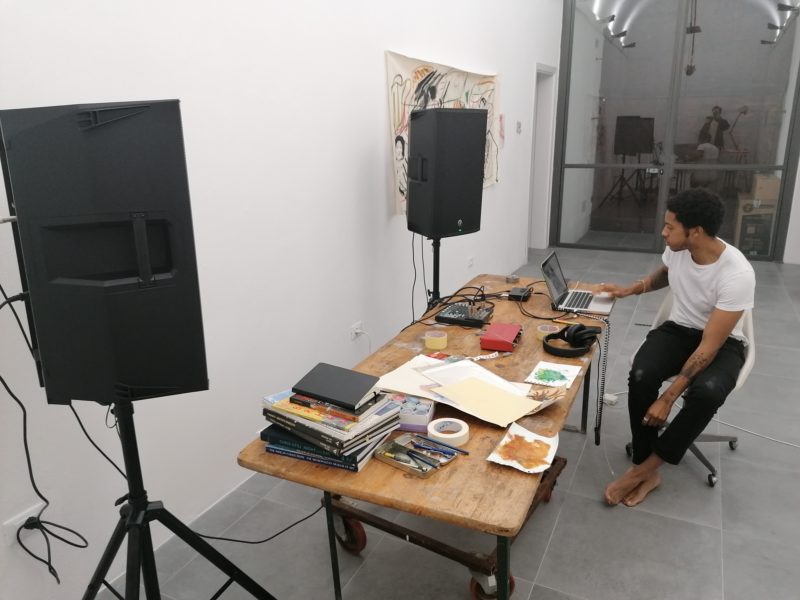
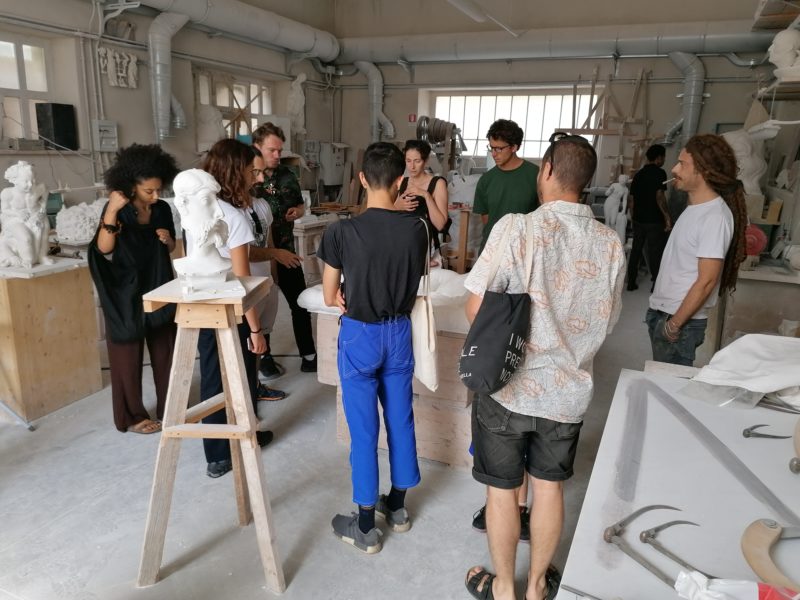
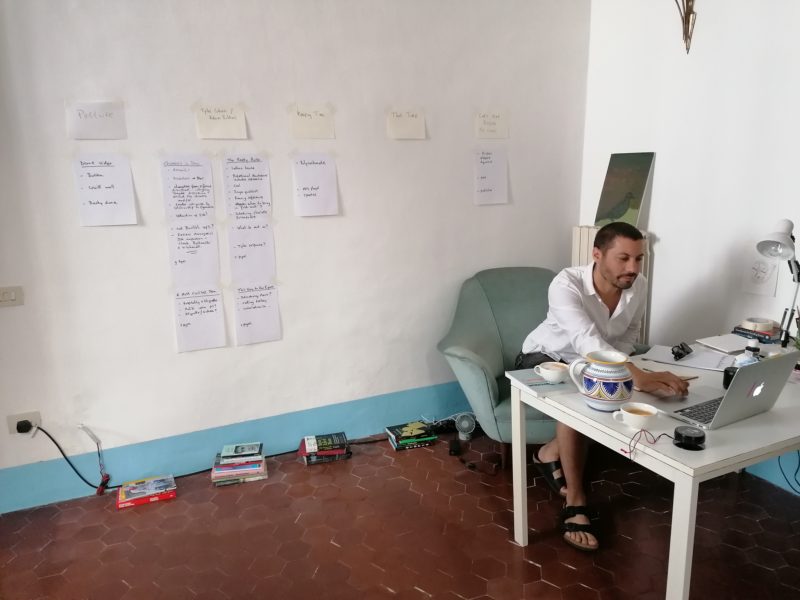
Guest residency curator Tony Tremlett discusses the fall session
A frequent visitor to Spoleto—as his signature in the Torre Bonomo guestbook attests—Joseph Beuys encouraged continuous change and lasting dialogue as ways to spur on the energies of creativity in any field. His notion of art as social sculpture and communal experiment curiously manifested itself in our six week residency session at the Mahler & LeWitt Studios.
Further to the weekly excursions in the cultural neighbourhood of Spoleto—to the De Donno Collection, Viaindustriae, the foundries and alchemists of Assisi, local museums and sacred forests—the residency involved lively and ongoing exchanges about what each artist does, why they do it, and their wider concerns. The six artists shared overlapping interests and attitudes and these stimulated many of the conversations; they were collectively listening, questioning and confirming, night and day. The relaxed cafe talks and heated dinner debates amounted to a cocktail of creations, scepticisms and micro-political challenges, which stitched the fabric for successful collaboration and companionship.
Exploring the outer zones of Spoleto, Lydia Ourahmane went in search of odd encounters and unusual places, capturing on 8mm film the murals of the small, deconsecrated 13th century church of Sant’Angelo di Nace.
Babatunde Doherty (Baba Ali) was a flâneur of the Italian life. He developed ink drawings of hand gestures, painted onto moss-eaten fragments of stone he had found on the hill- side of Monteluco. His works demonstrated his great eye for texture and painterly rhythm, capturing the soul-stirring character one also finds in his music. Doherty shared his time and sounds with Hiba Ismail, who absorbed all things mechanical and acoustic. She went great lengths in search of local electricians and welders to build her kinetic sound pieces. Ismail also partnered frequently with Adam Gibbons for ideas, who was as much resident adjudicator as he was resident agitator. His geodesic-inspired polycarbonate structures offered a convincing and intellectual reconciliation of art, architecture and the boundaries that define them, whilst nodding toward Buckminster Fuller’s 1967 Spoletosfera dome in the nearby municipal gardens. Architectonic thinking also played out in the paintings and performances of Keef Winter. He initiated lively collaborative drawings with the other artists and developed new performances that demonstrated his urge to rhythmically and assertively transform his chosen materials.
As a resident the previous year, Lina Hermsdorf took ease in knowing her way around Spoleto. Her expertise with high-tech equipment and deep interest in a nearby ancient and sacred forest, reflected her project’s focus on the way information can be transferred through bodies and nature.
This group of artists, with their like minds and intertwining practices, helped illuminate and query the fissures and fixtures in each other’s work. Together they contributed to a learning model which, with the residency’s focus on discourse as much as production, goes beyond expected structures of time and productivity and gives phenomena—ideas, or the sparks of them—a chance to occur without program or imperative.
— Tony Tremlett
The fall residency session coincided with an invitation from the Ceretto family, wine producers in the historic region of Le Langhe, to celebrate twenty years of the Capella del Barolo, a countryside chapel painted by Sol LeWitt and David Tremlett. In 1999 David Tremlett was invited by the Ceretto to create a collaborative artwork out of the ruins of the Capella della S.S. Madonna delle Grazie, now known as Capella del Barolo. It stood in the Ceretto’s vineyard, Brunate, in La Morra. Tremlett invited LeWitt to work with him on the project. The artwork they produced together has become an icon of the region, visited by tens of thousands of people each year. Tremlett pastelled the interior of the chapel and designed its marble floor and stained glass windows, whilst LeWitt painted the exterior.

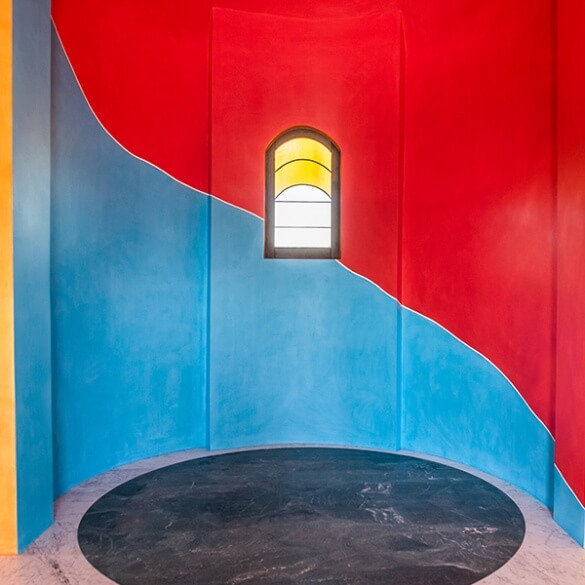
Already working on the residency session with a group of artists whose interests lay in sound and performance, we began to think about the chapel as a place originally intended for gatherings, hosting music and prayer. This led us to consider LeWitt and Tremlett’s appreciation of music and the important relationship it has to their work. Music, like the serial art of both artists, is based on variation within a repetitive structure and, in this respect, the work of LeWitt and Tremlett can be read and experienced in a similar way—having rhythms, harmonies and dissonance, timbre and texture.
Following this line of enquiry, we developed Keeping Time in tandem with the residency session. Whilst looking at LeWitt and Tremlett’s work in the context of the chapel and music, we created an opportunity for a younger generation of artists to develop and exhibit new work, often in direct response to the chapel, creating inter-generational and inter-disciplinary dialogues. For the occasion we produced a vinyl record and publication and staged an exhibition and a performance program.
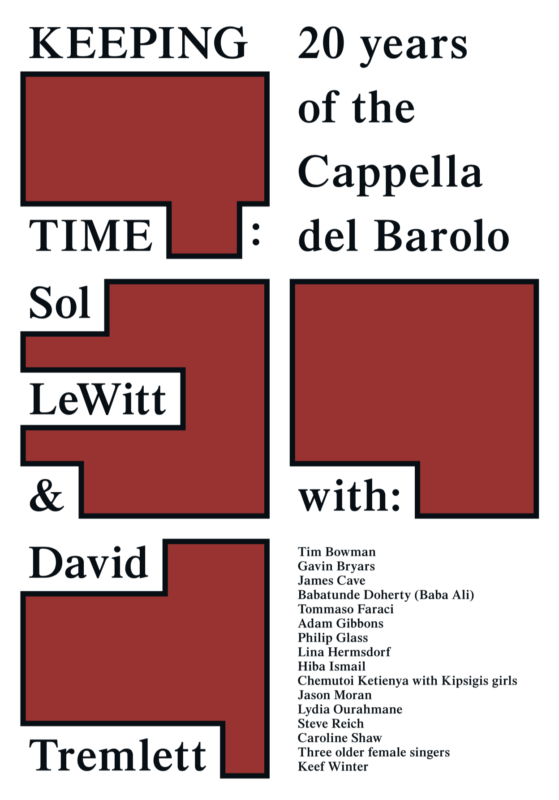
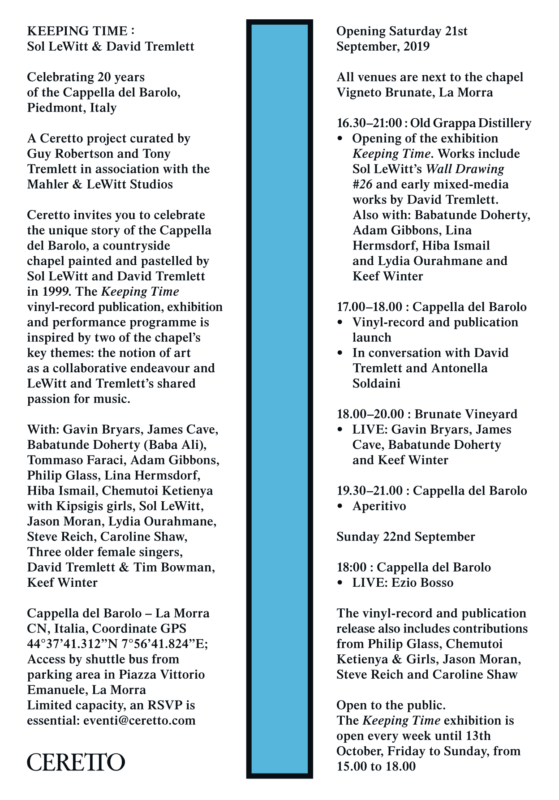
Keeping Time, vinyl record and publication
Sides A and B of the Keeping Time vinyl look at musicality in LeWitt and Tremlett’s work by delving into their own extensive music collections and finding affinities between their visual art and the work of their composer friends and contemporaries: tracks are included by Gavin Bryars, Philip Glass and Steve Reich, as well as from lesser-known but influential sources. Sides C and D of the record, meanwhile, were conceived as a point of access to LeWitt and Tremlett’s practice for a younger generation of artists, whilst providing a platform for their work. Some of the artists chose to respond directly to the chapel or the musicality in LeWitt and Tremlett’s work, whilst others more broadly relate through their exploratory combinations of visual art and architecture with music and performance. As well as the artists on the fall residency session, contributions to the vinyl were given by James Cave, Jason Moran and Caroline Shaw. Many of the artists, including Cave and Moran, composed new tracks for Keeping Time. The publication which accompanies the vinyl records—and which are available by contacting the Mahler & LeWitt Studios or Ceretto directly—include extensive program notes.
To purchase the record please click here>>
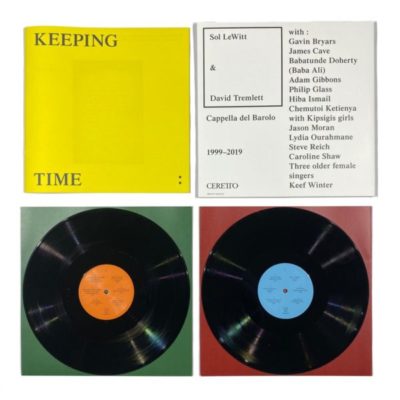
Keeping Time, performance program
On Saturday 21 and Sunday 22 September a number of performances took place on a stage outside the Capella del Barolo. On Saturday, from the Mahler & LeWitt Studios residency program, Babatunde Doherty (Baba Ali) and Keef Winter presented new work (see texts below). James Cave, who was a resident in Spoleto in 2016, performed his contribution to the Keeping Time vinyl with Nick Barr, ‘The Point on the Arch Midway Between Two Walls’, which was inspired by LeWitt and Tremlett’s wall drawings. Gavin Bryars, a longtime friend of Tremlett’s and a pioneering British minimalist composer, who also contributed to the Keeping Time vinyl, played a number of works. On the Sunday, Ezio Bosso, another close friend and collaborator of Tremlett’s presented a concert which incorporated ‘Roots’, a piece he composed with Tremlett’s friendship and work in mind.
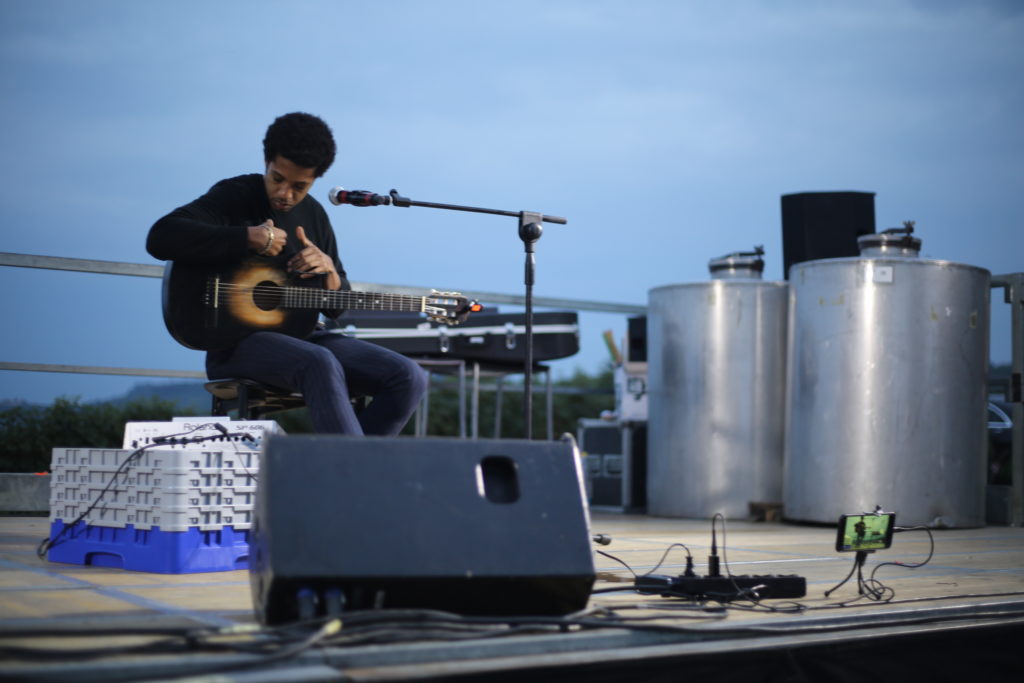
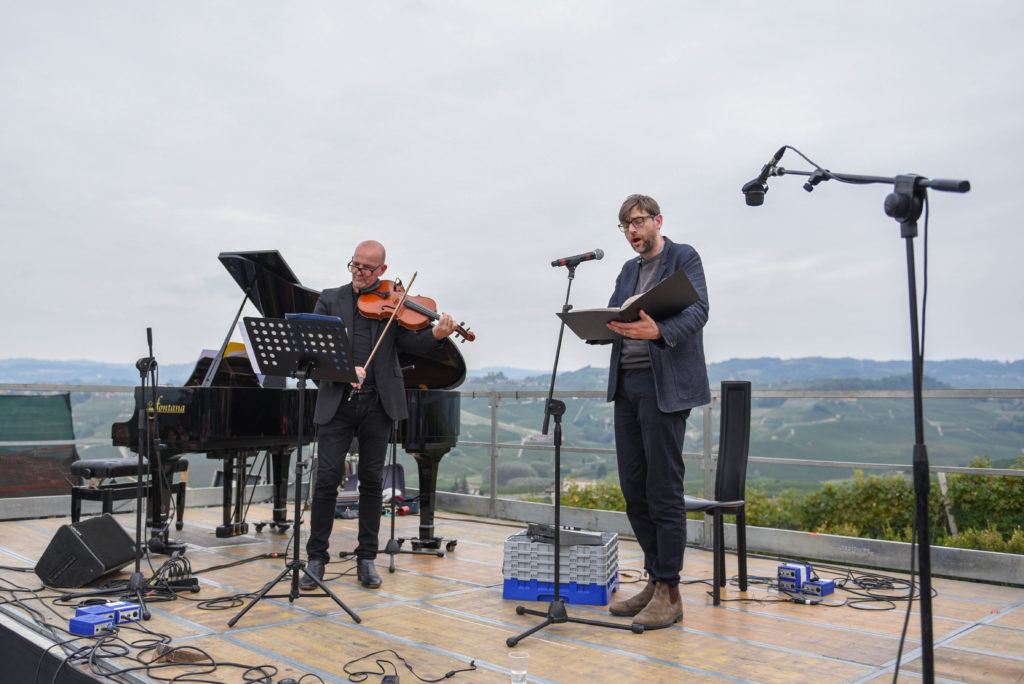
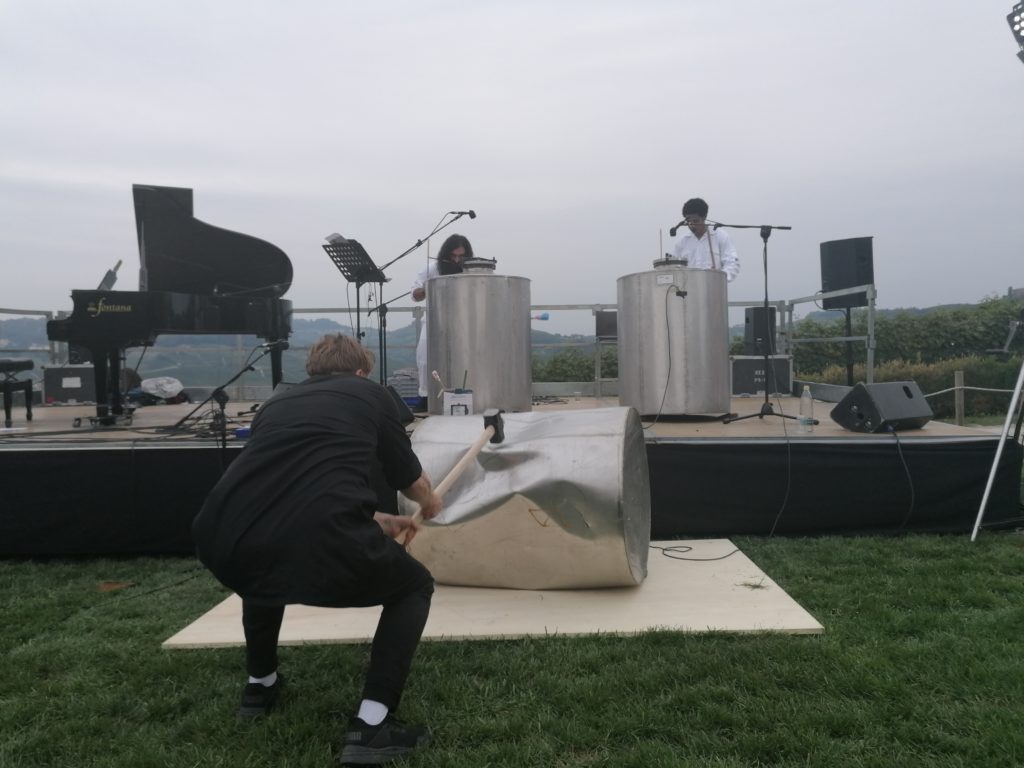
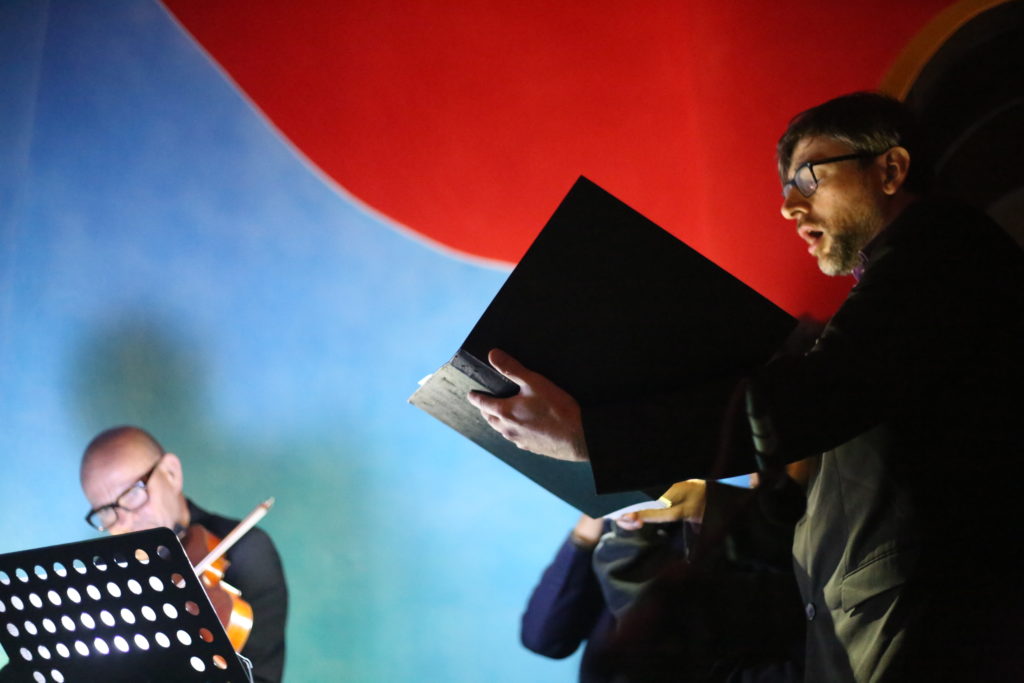
Keeping Time, exhibition
As with the vinyl record, the related exhibition had two functions. In the first part of the exhibition, upstairs in the Old Grapperia opposite the chapel, we presented archival material which shed light on the friendship of LeWitt and Tremlett and the story of the chapel (including sketches by both artists showing variations of the chapel’s final design). These were displayed alongside artworks by LeWitt and Tremlett, as well as other archival material, which show the relationship between their practices and music. A number of early works by Tremlett were included: for example, drawings and text pieces on manuscript paper and a photo collage of a tap dancer (a recording of the tap dancer was used by Tremlett in his Recordings on Loop Tape, 1969-71; this was broadcasted across the gallery intermittently, alongside other loops from this album). The exhibition also presented an iteration of LeWitt’s Wall Drawing #26 (1969). This was LeWitt’s contribution to the influential ‘Art by Telephone’ exhibition in 1969 at the Museum of Contemporary Art in Chicago, for which all of the artworks were transmitted by the artists over the telephone to the exhibition curator, David H. Katzive (see publication and vitrines for more details). LeWitt contributed Wall Drawing #26, a black pencil grid which was to be filled with lines in four different directions (vertical, horizontal and the two diagonals) according to the drafter’s wishes. In his telephone call to Katzive, LeWitt described the wall drawing in musical terms saying, ‘I think of it more like a composer who writes notes, and then a pianist plays the notes, but within that kind of situation, there’s ample room for both to make a statement of their own.’

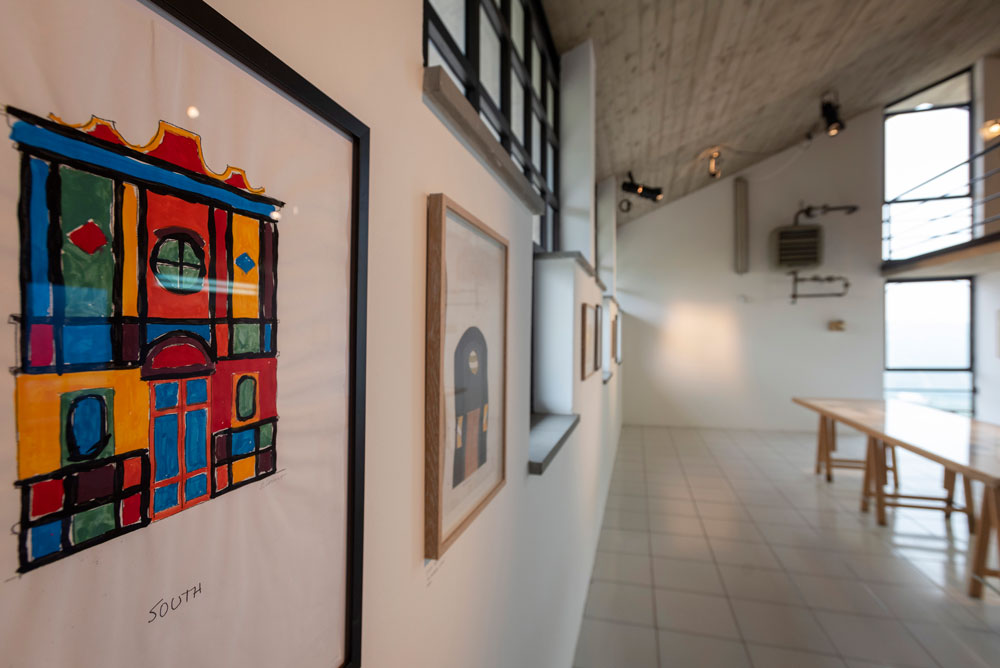
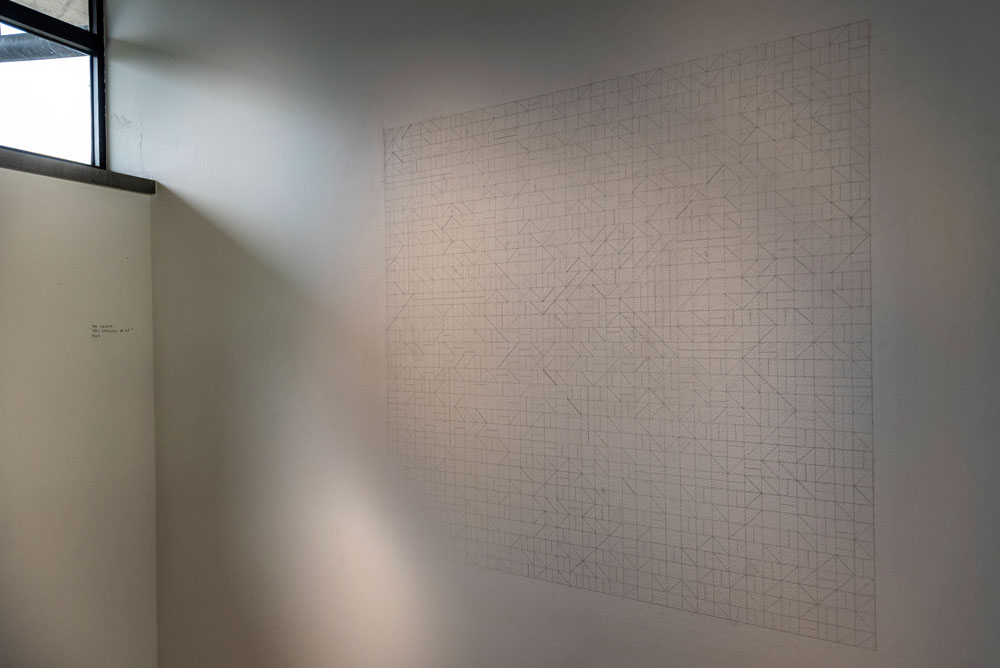
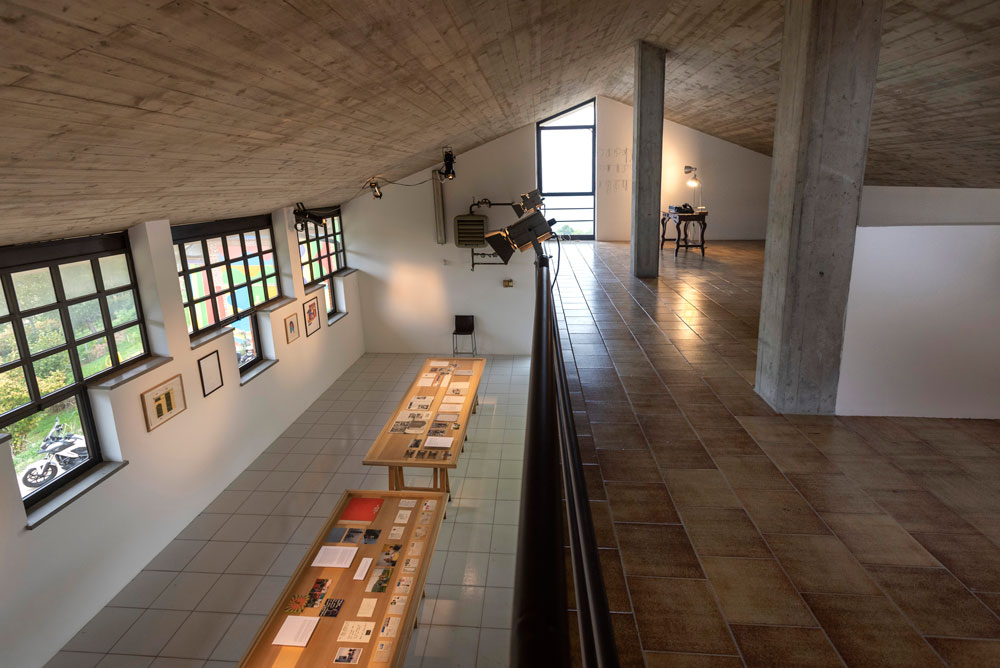
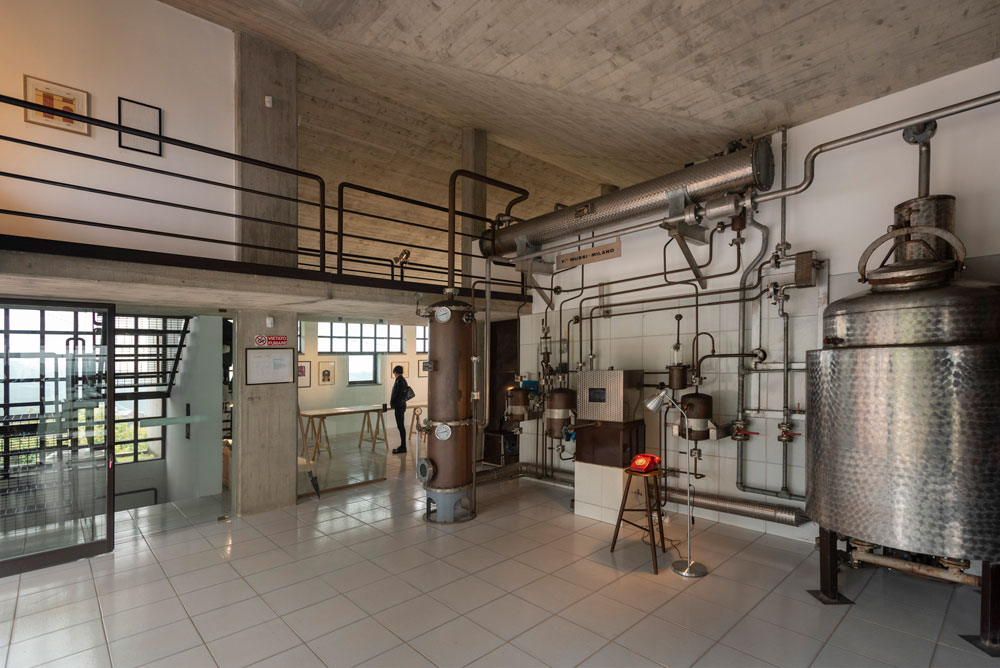
The second part of the exhibition, downstairs in the Old Grapperia and around the site of the chapel, was brought together by the group of artists who participated in the related residency program in Spoleto. Their interest in performance or sound related and collaborative practices, created relationships with the notion of the chapel as a performative space intended for music and ceremony. The texts which follow summarise their contributions to the exhibition.
Warning: foreach() argument must be of type array|object, false given in /app/web/app/themes/spoleto/single.php on line 219
Babatunde Doherty
Babatunde Doherty’s Clapping Hands I – IV, 2019, were initially conceived as a response to Steve Reich’s ‘Clapping Music’, a clapping duet which appears on the Keeping Time vinyl. His drawings grapple with the challenge of reproducing the act of clapping as a two dimensional image. More generally, Doherty is interested in the way gestures are used as a type of language, passed on from generation to generation. With this in mind, his accompanying sound piece, Batti le mani, 2019, is a recording of Doherty playing a sequential clapping game with the young children of a friend he made while on residence in Spoleto. In the performance program Doherty played his contribution to the vinyl record as well as new work.
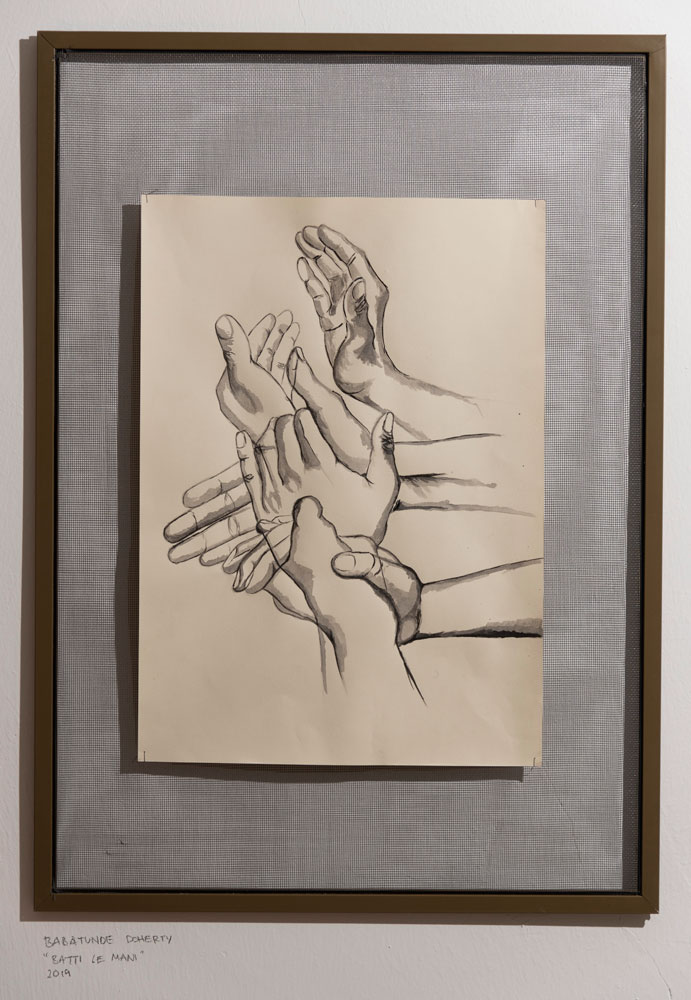
Tommaso Faraci
Tommaso Faraci is from Spoleto and since 2010 has worked as an artist and assistant curator with the Anna Mahler Association and subsequently the Mahler & LeWitt Studios. His Stahmo I, II, III, 2019, combines chance, impulsive mark-making with the controlling properties of other materials. He considers his process-led approach to paintings as a time-based activity. In this work aniline, an alcohol based powder, is employed to make the ink and paint dry quickly, so the nebular forms are preserved—he says, ‘it freezes the chaos or harnesses the unpredictable.’

Adam Gibbons
The hinged polycarbonate of Adam Gibbons’ Untitled Structure, 2019, was fixed to the exterior wall of the grappa distillery, facing the Cappella del Barolo. Its triangular forms are derived from the elementary shapes of a geodesic dome. As a versatile, serial object between sculpture and architecture, an ad hoc exhibition structure, it hosts and marks space, both containing and capturing work. Hmmmmmmmmmmmmmmmmmmmmmmmmmmm (a hum and a buzz), 2019, plays from the structure’s open side. The sound piece is an imperfect recording of a vocal warm-up: an exercise typically carried out by actors in preparation for a rehearsal or performance. Lasting around ten minutes and playing once an hour, the audio offers an absurd call to prepare the body for speech, to improve posture, and to be ready to perform: addressing an internal presence in order to externalise it, or vice versa
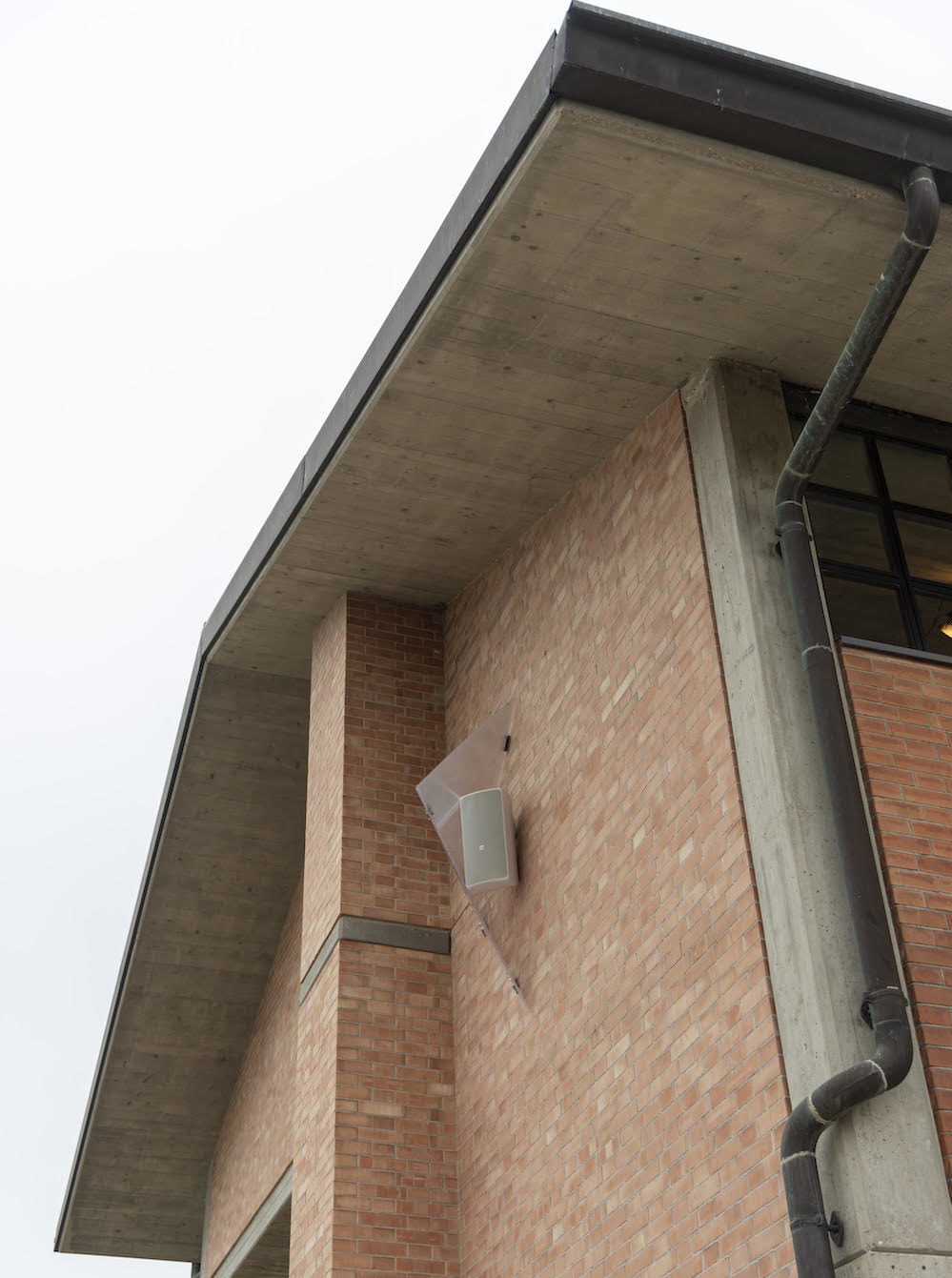
Lina Hermsdorf
Lina Hermsdorf’s State 0 II, 2019, audio, 22 minutes, stems from a personal experience of being in an MRI scanner, a machine used to create medical imaging of the body. She transfers the sounds created by the machine’s strong magnetic fields and radio waves to a large, disused grappa tank in the distillery. The noises an MRI scanner makes change depending on the type of tissues and organ that the scan is attempting to image. Her practice often raises questions about the relationship of the biological body to technology. State 0 II builds on work Lina developed for an exhibition at Flat Time House, London and uses John Latham’s descriptor for the philosophical concept of ‘nothing’ as its title.
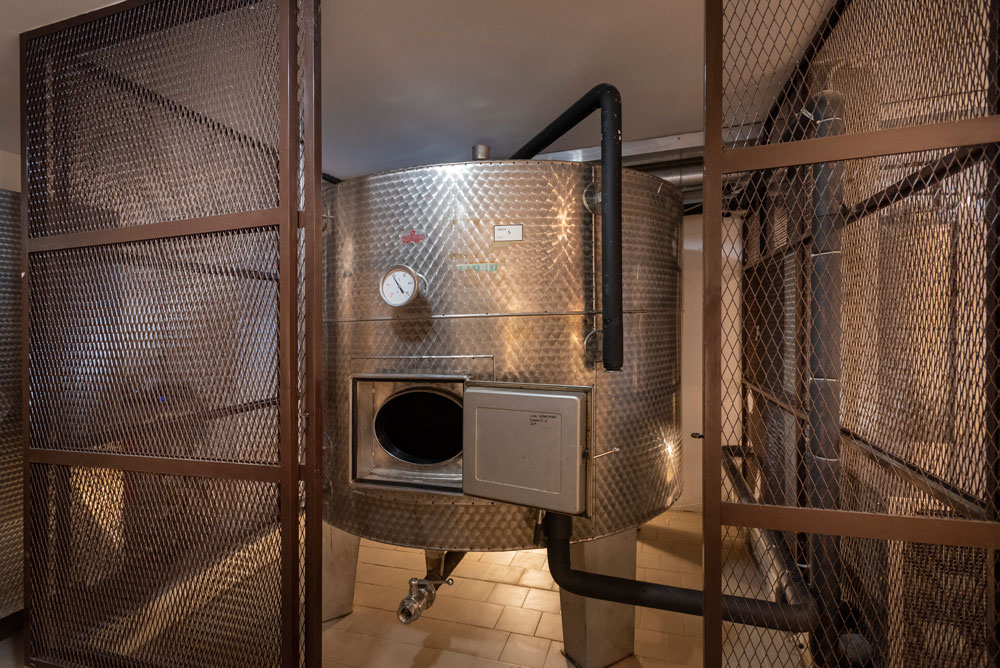
Hiba Ismail
Often starting with field recordings, Hiba Ismail locates underlying rhythms and harmonies through everyday objects. Low fugitive laughter, 2019, was a sound installation, activated every hour, based o her recordings and re-recordings of truck horns, consisting of three notes.
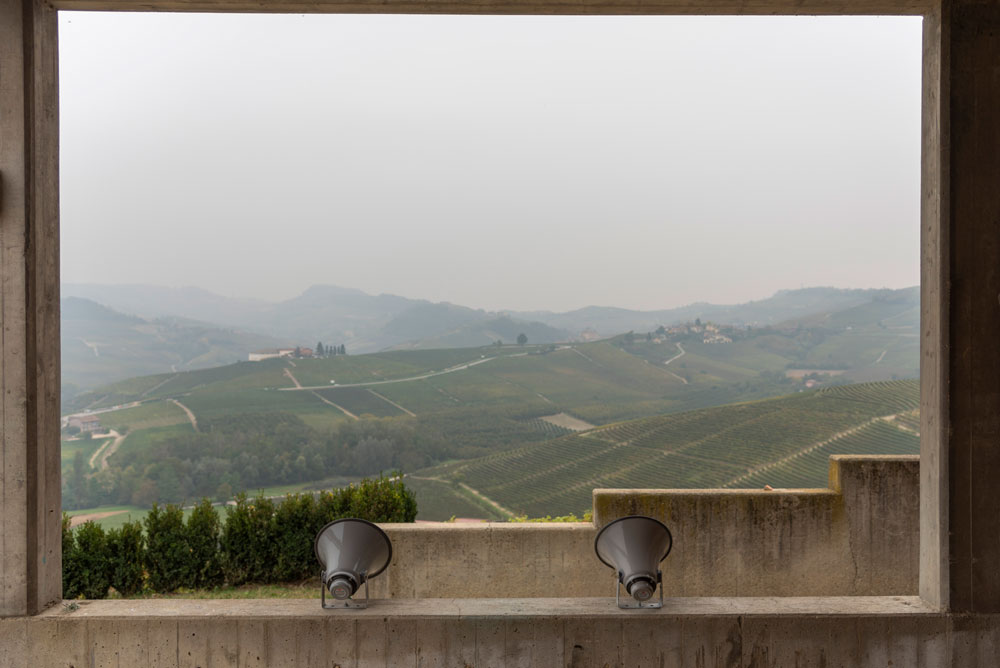
Lydia Ourahmane
Outside the grapperia, inbetween the vines, was Lydia Ourahamane’s HOLE, 2019. She began digging as soon as she arrived at the chapel. At the end of the exhibition the hole was refilled. HOLE acted both as a situation, and an interrogation of labour in the monotony of an intensely physical exercise. She has discussed the rhythm involved in digging as a way of ‘situating limit’.
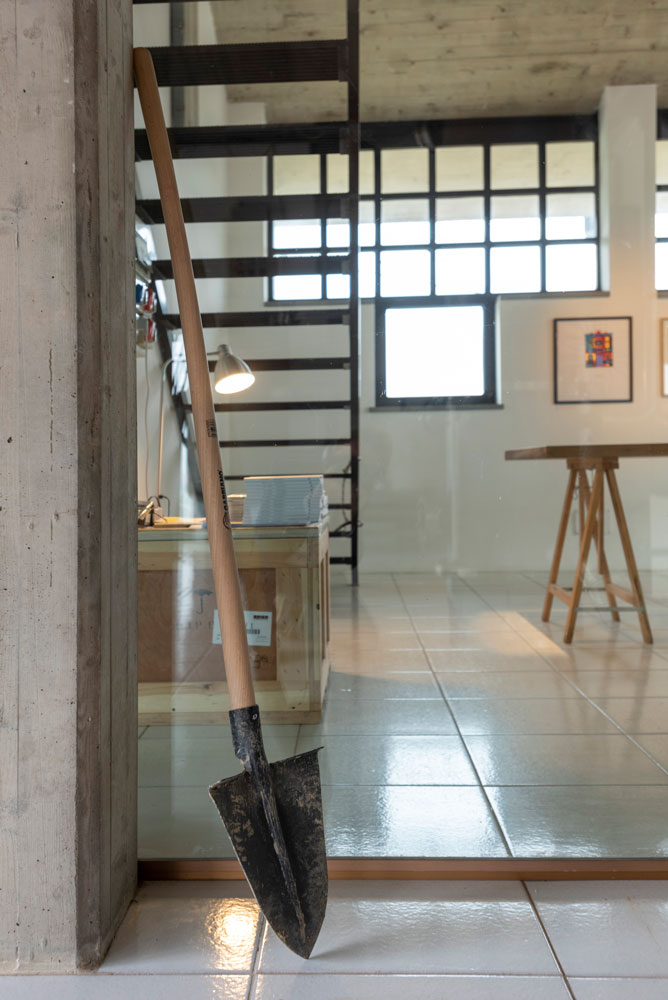
Keef Winter
Winter’s performance Appropriate Energy, 2019, unlocked the sonic properties of grappa distillation tanks by reemploying them as drums. The tanks were found on site in Ceretto’s Grapperia where the ‘Keeping Time’ exhibition took place. In the exhibition was Winter’s Feel for you baby, 2019. Its title is taken from a UK garage song. The ink running out on each of the five gestures might be compared to the reverberation of a snare drum. It asks us to think about the expressive limits and capacities of the given material.
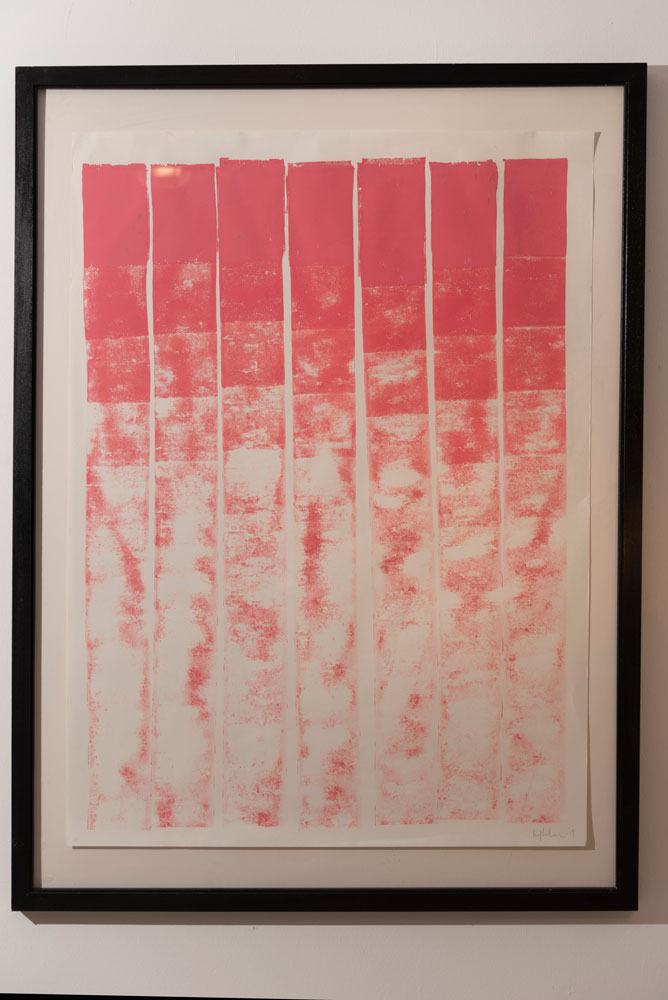
OPEN STUDIOS
We concluded the fall residency session with an Open Studios event back in Spoleto. In the LeWitt studio Lydia Ourahmane presented new footage shot in a church in nearby San Giacamo, Chiesa di Sant’Angelo di Nace. Babatunde Doherty exhibited versions of his hand gesture pictures but drawn on stone, and Lina Hermsdorf installed a draft version of her film Lucus Bona Dea, which she later exhibited in her solo show in London at Jupiter Wood.
In the cantina we installed versions of Adam Gibbons’s geodesic structures as well as documentation of Keef Winter’s performance in the ‘Keeping Time’ project and collaborative paintings the residents had made during the residency. In the courtyard at the back of the studios Hiba Ismail installed a sound piece derived from her explorations with the truck horns which she had also used in Alba.
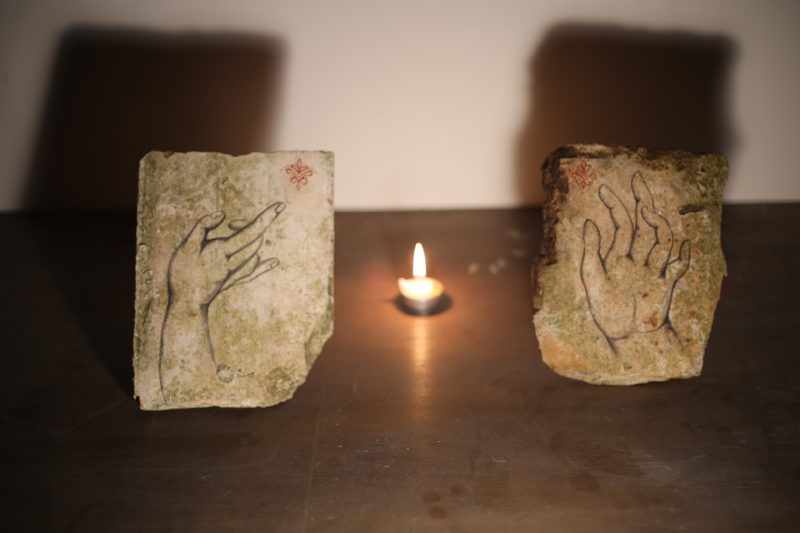
Babatunde Doherty
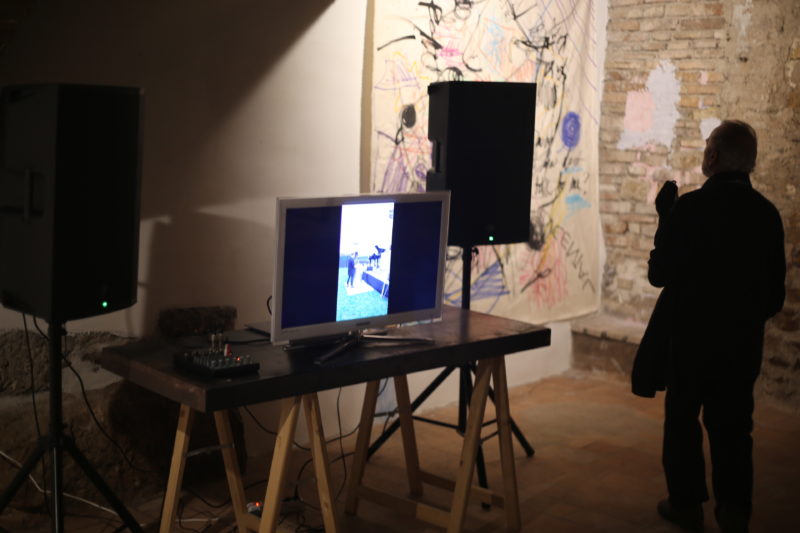
Keef Winter

Hiba Ismail
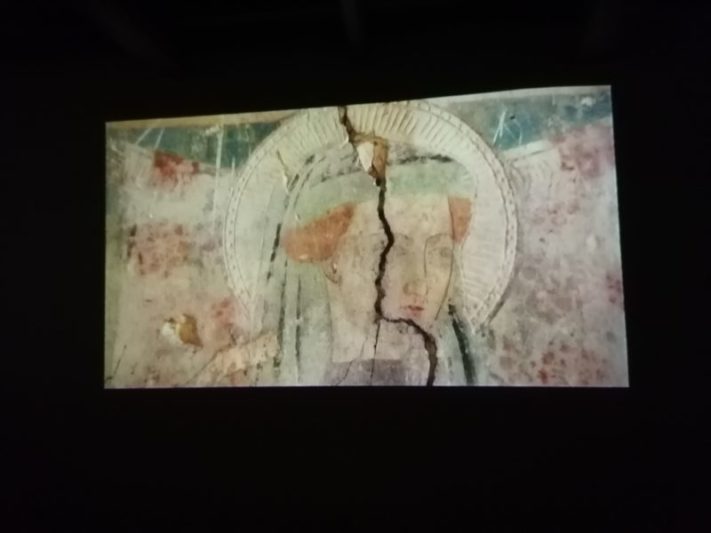
Lydia Ourahmane


